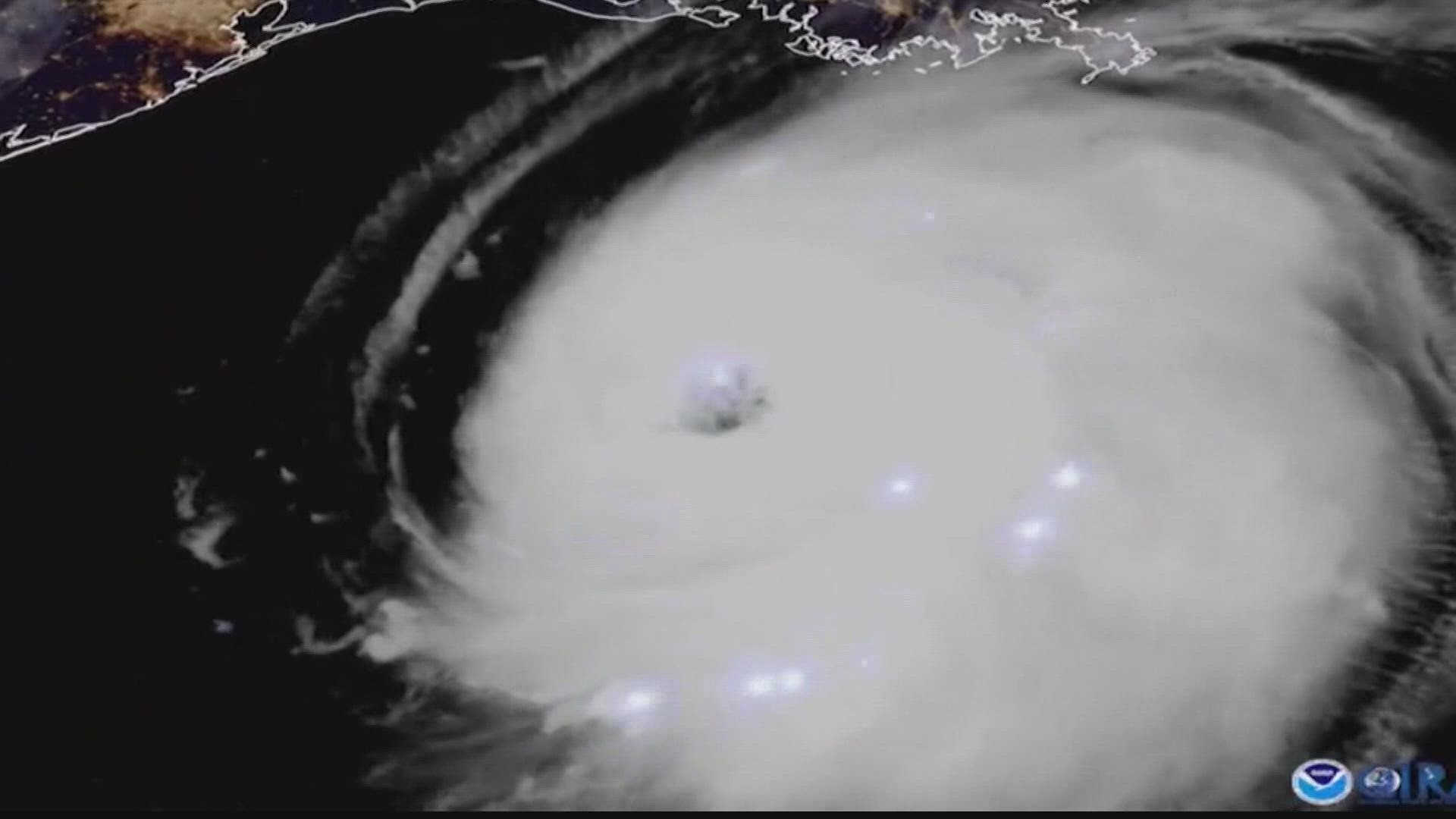ATLANTA — After Florida, Ian will have its eye on part of Georgia's coastline.
As Ian's track and impacts come into clarity, Georgia Power will be ready. They have activated their 'Storm Center' and are monitoring possible impacts on our state's power supply.
Restoring power after a hurricane takes an army. And like an army, Georgia Power's team can deploy thousands of workers on short notice and work around the clock to turn the lights back on.
How quickly they are able to restore power has changed over the years as technology advances. More than three decades ago, Georgia Power moved to an automated grid system, allowing them to open and close switches and isolate power outages to as few customers as possible. In the last decade, they introduced their 'Smart Grid Technology', which can self-heal and make those decisions much quicker.
But when it comes to hurricane power outages, it's not just as simple as re-routing the power a few times. There's often significant damage to the power infrastructure -- from power poles and wires down to larger transmission lines being damaged.
So that's when the ground crews really get to work.
Lineworkers, engineers, and other techs go out in the storm damage and have to figure out how many power poles and lines are down that need repair/replacement and the safest way to restore power.
Historically, with live wires down and much debris, they would've had to wait until they knew the wires weren't live, and enough trees were removed to assess the situation and make their strategy for restoring power. If a road was flooded, they'd have to wait for those waters to recede before getting to work.
That is, until 2016.
That was the year Georgia Power began incorporating unmanned aerial vehicles, more commonly known as drones, into their hurricane response. And it quickly became a game-changer. Drone pilots can fly the drones to areas they cannot yet access by car or on foot and give a birds-eye view of the power infrastructure damage. This allows the crews to earlier asses what supplies are needed to restore power.

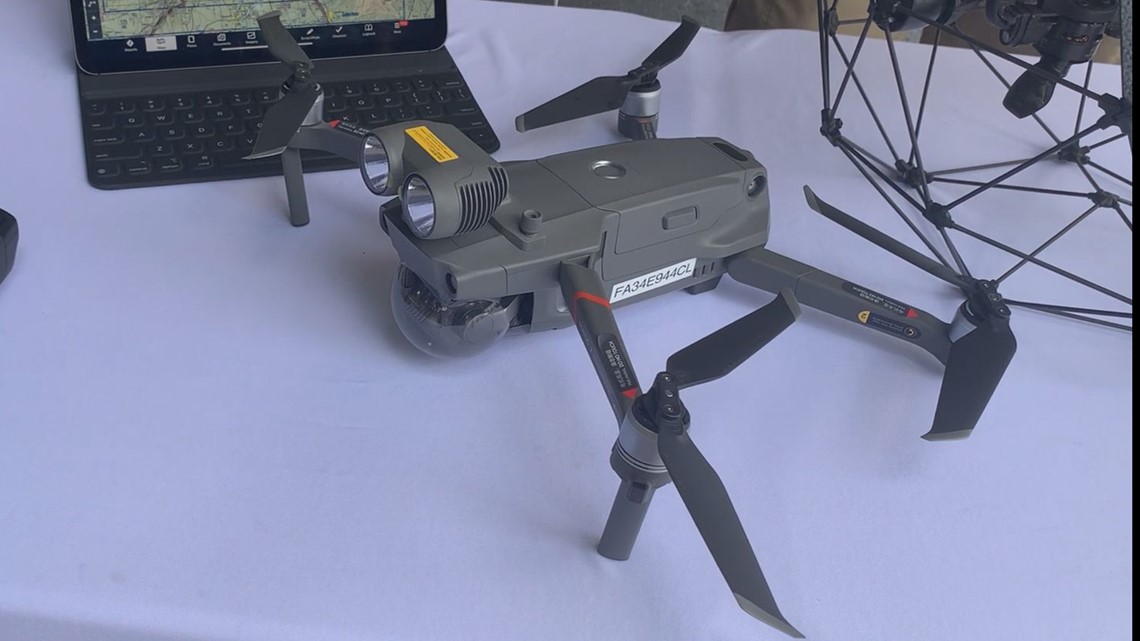
John Kraft, Georgia Power Spokesperson, said this new drone technology has been a huge game changer, "They allow our crews to see the type of damage, assess what damages, maybe in an inaccessible area, maybe an area is flooded, trees are down, they can't get to it. These drones are able to both the small ones that our crews may have and can send it up real quick, these larger ones that can inspect our transmission lines, look for problems ahead of time. So it's really making a difference, helping us in in terms of preventing problems and restoring power quickly when we do get an issue."
Upon launch, they tested this new technology with just a few specialized pilots. They had eight or nine drone crews fly after Hurricane Michael in 2018.
Corey Hitchcock, Southern Company's Unmanned Aircraft Systems Lead, said they quickly realized the advantage drones provide, "Initially it was a specialized group of people that were taught to go out and operate drones. What we wound up doing and found more beneficial is putting a drone like this and the subject matter experts' hands... who's already going out to patrol the power lines and is already looking at what they need to fix to get the lights back on. Now they have this tool in their toolbox to operate."
Southern Company now has 174 trained drone operators that work in small grounds teams. This year, they're taking it a step further with a new, larger, more sophisticated drone in the fleet. It really is 'Bad To The Drone.'
The gas-powered Skyfront Perimeter 8 can fly for 90 miles at a speed of 28 mph. They'll be working within special FAA permit guidelines, so they'll be flying much shorter distances of less than two miles at a time this year. It works off of a mesh-radio network.

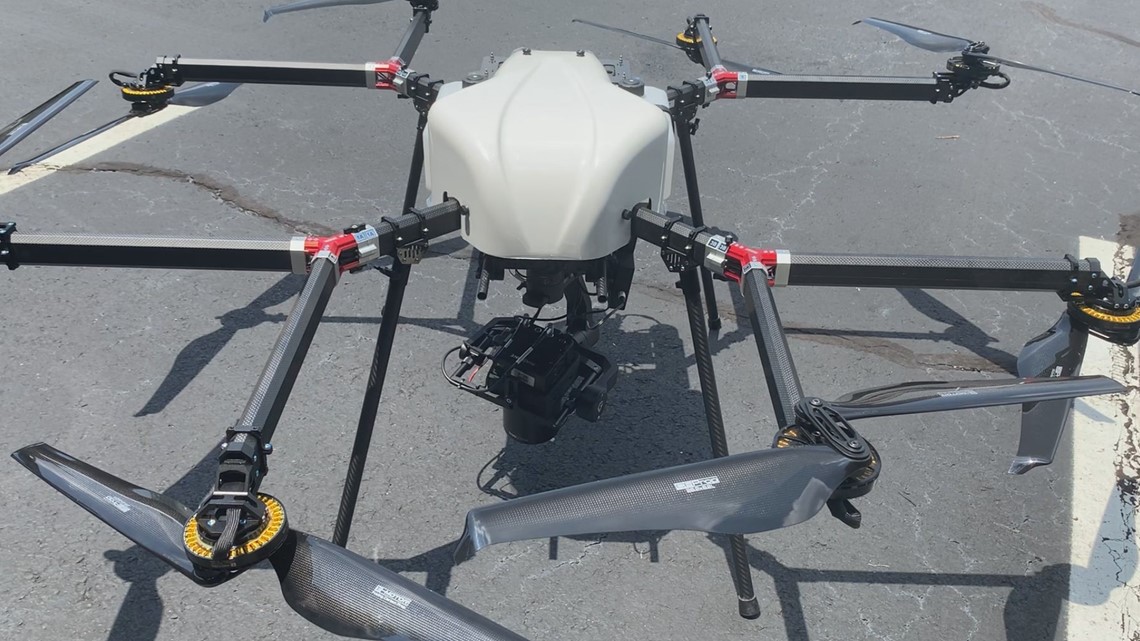
The strategy behind this new large drone will be a little different from their standard smaller ones. It will be used for analyzing the main transmission lines. They also hope to use it to map the power grid layout in advance of a storm. Then afterwards when flying again, they'll have the best depiction of what needs to be done to restore power.
Just as the technology behind restoring power has advanced in recent years, Georgia Power also continues to become more efficient in mobilizing work crews in a short amount of time. After Michael in 2018, they mobilized 6,500 people in just two days. And with Irma, that number was over 8,500 from the U.S. and Canada.
Their efficacy starts with lots of pre-planning. In the days leading up to a storm, Georgia Power first decides where crews will most likely be in need. They have 120 'Right of Entries' around the state where they can pre-position these staging sites for crews to come in after the storm passes.
With hotels often in short supply, they contract mobile living units for the crews with bunk beds, showers, and laundry facilities. These are run-off generators, keeping the cabin spaces cool and the lights on while crews rest in between shifts. Storm Services, LLC supplies these living quarters, supporting up to 25,000 resources at a time in the aftermath of a hurricane. They also haul in a mobile kitchen to 'Feed The Beast', providing hot breakfasts and dinners for the crew.

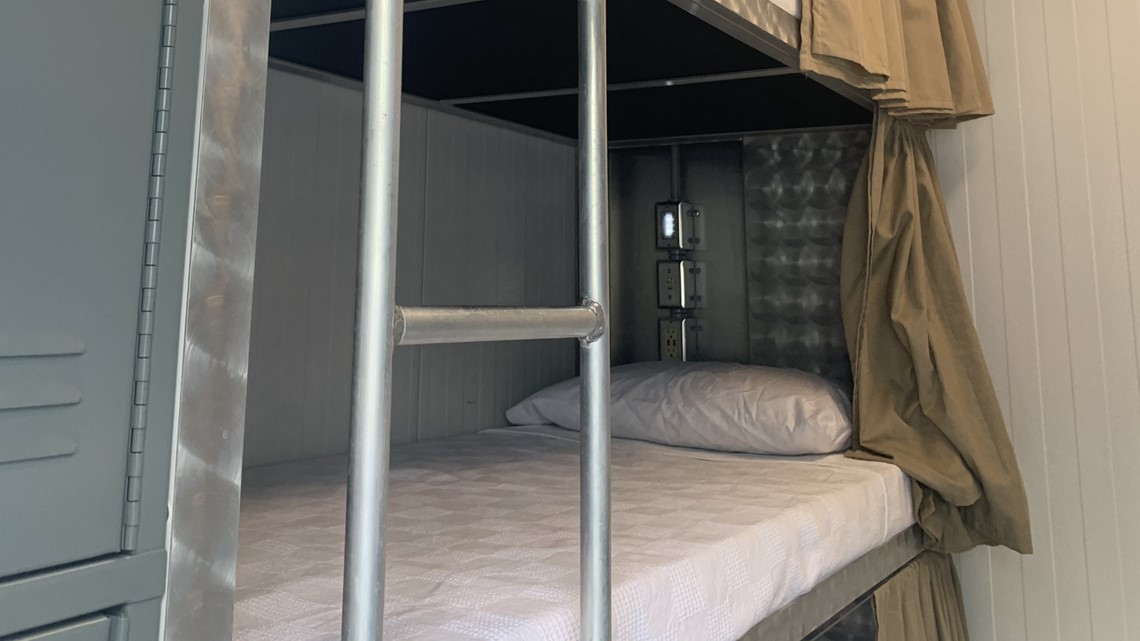
While some of the 'big picture' storm response is handled back at headquarters in Atlanta, the staging sites are spearheaded on location with their 'Mobile Command Centers'. This is where they draw more detailed logistical plans of where crews should be and keep the communication portals flowing.

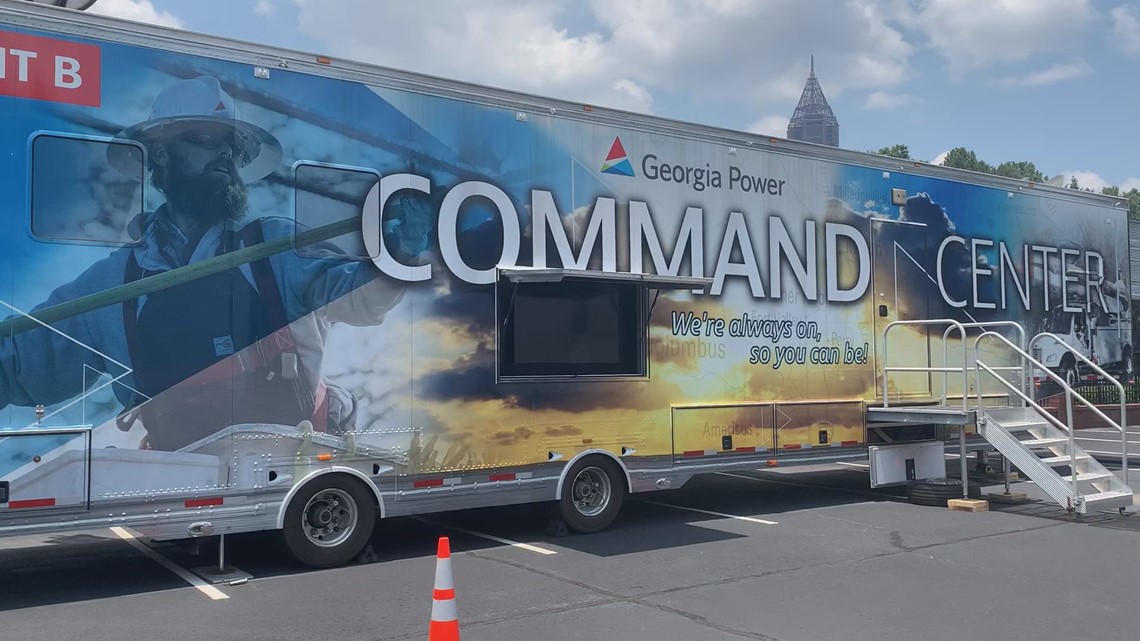
NOAA forecasts another above-average season in the Atlantic, Georgia Power is ready. From mobilizing crews to new drones in their arsenal, they are prepared to restore power as quickly as possible.

